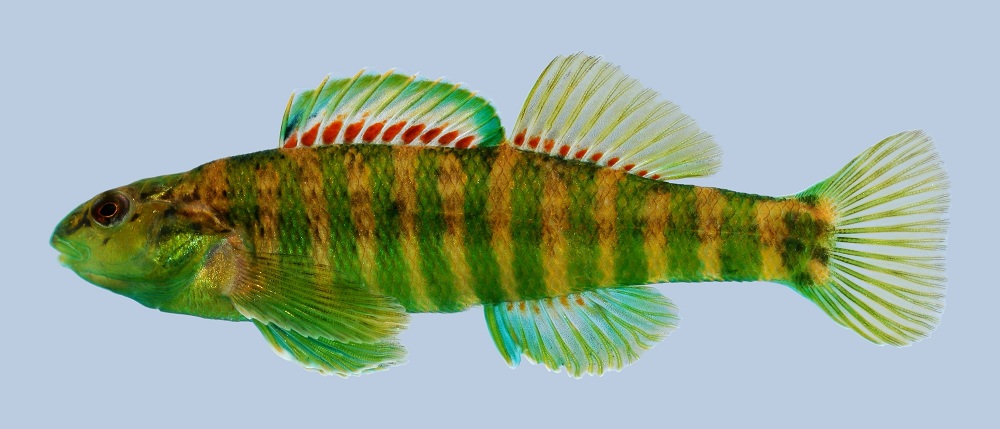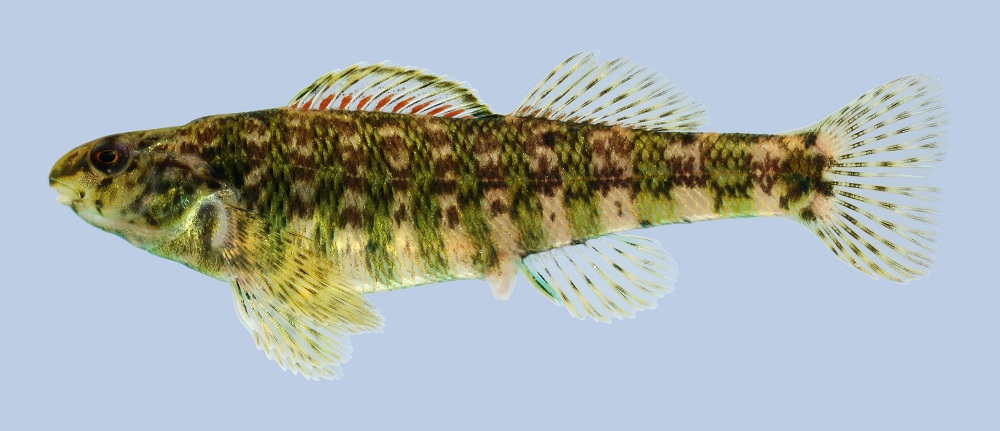Form and Function
There are three components in the coloration of the Etheostoma zonale species: melanophores, green color pigments and red color pigments on the dorsal find base. These colors increase in intensity from young to adult, female to male and non-breeding to breeding seasons (Tsai and Raney, 1974). During breeding season, the males colors become even more bright with species-specific color patterns and may even develop fleshy knobs at the tips of their fins which are thought to mimic an egg. The male can be determined by the shape of their body as well as the green lateral bars and six dorsal blotches that are shown. Females, in contrast, have only brown pigments and typically have a spotted pattern (Mendelson, 2003).
The maximum standard length of males is 62mm and 52mm for females. The snout is usually slightly pointed in the young and becomes more blunt in adults. The mouth is short and horizontal and does not experience any major changes as the young develops into an adult. Several bands of villiform and small canine teeth are found on the top and bottom of the jaw, however, no palatine teeth are found in this species (Tsai and Raney, 1974).
The cheek, breast and belly vary from the presence of scales to no scales, otherwise known as squamation. The breast squamation trend becomes heavier across the state, from east to west. In addition, the west also shows a reduction in squamation to the north and greater squamation to the south(Tsai and Raney, 1974).


